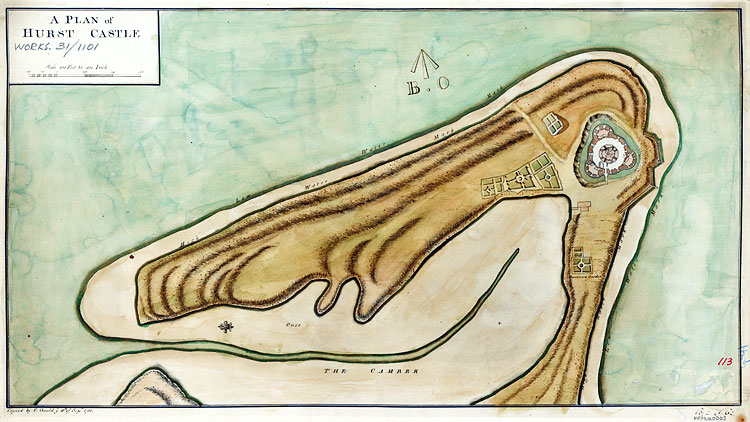Research on Hurst Castle
The castle and spit immediately around it have both been the subjects of extensive research, with an emphasis on the architectural development of the castle. There are further questions to be answered, particularly about life on the spit.

Recent Research
The main focus of research has been on the architectural evolution of the castle,[1] the growth and decline of the adjacent civilian settlement,[2] and the history of Trinity House's involvement with the lighthouses.[3] An interesting study has investigated the lives of a number of military personnel and civilians who lived and worked at Hurst.[4]
Questions for Future Research
Topics meriting further research include:
- possible occupation and uses of the spit before the castle was built
- the medieval salt industry in the adjacent marshes
- the original uses and early layouts of internal spaces in the central tower and bastions of the castle
- details of garrison life throughout the period of military occupation – where did the soldiers come from? How were they trained? What was their daily life like? What were the standards of accommodation?
- civilian life and occupations on the spit
- the lives of the families associated with the castle, lighthouse, customs post and civilian settlement.
READ MORE ABOUT HURST CASTLE
Footnotes
1. M Biddle et al, The History of the King's Works, vol 4: 1485–1660, part 2 (London, 1982), 539–44; JG Coad, 'Hurst Castle: the evolution of a Tudor fortress 1790–1945', Post-Medieval Archaeology, 19 (1985), 63–104 (subscription required; accessed 9 April 2014).
2. J James, Hurst Castle: An Illustrated History (Wimborne, 1986).
3. DB Hague and R Christie, Lighthouses: Their Architecture, History and Archaeology (Llandysul, 1975).
4. James, op cit.